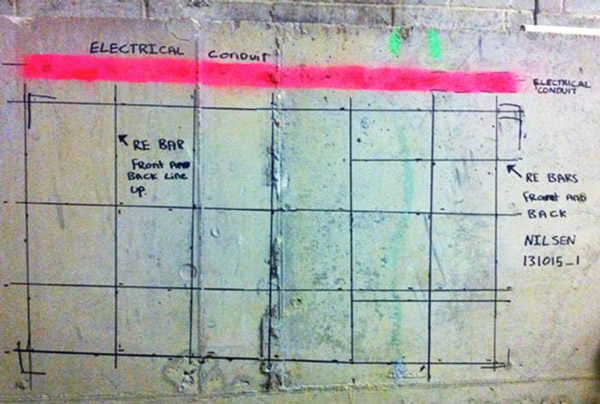Enhancing Task Planning and Implementation Via Advanced Concrete Scanning Techniques
In the world of task planning and insight, precision and execution are crucial components that can make the distinction between success and troubles. Advanced concrete scanning methods have actually arised as an innovative device readied to elevate the requirements of task monitoring within the building and construction industry. By utilizing innovative innovation, these methods use a glance right into the architectural honesty of a structure also before the initial brick is laid. The effects of such improvements are extensive, guaranteeing a standard change in just how tasks are come close to and provided.
Benefits of Advanced Concrete Scanning Techniques

Improved Accuracy in Project Assessments
Enhancing project analyses through innovative concrete scanning techniques substantially increases the precision and dependability of construction examinations. By employing sophisticated scanning innovations such as ground-penetrating radar (GPR) and 3D imaging, task teams can currently acquire thorough insights into the condition of concrete frameworks, recognizing prospective defects or weaknesses that may not be visible to the naked eye. This improved degree of accuracy in job evaluations makes it possible for building professionals to make even more enlightened decisions pertaining to repair work and upkeep strategies, resulting in improved general job end results.
Moreover, the enhanced precision in task assessments achieved through innovative concrete scanning techniques helps in lessening the threat of unforeseen issues during the construction stage. By proactively identifying covert abnormalities within concrete frameworks, such as rebar deterioration or gaps, job groups can address these concerns at an early stage, staying clear of expensive hold-ups and rework later in the job lifecycle. Inevitably, the boosted precision in task analyses facilitated by website here advanced concrete scanning techniques contributes to higher effectiveness, cost-effectiveness, and high quality in building jobs.
Early Identification of Architectural Difficulties
Early detection of structural challenges plays an essential function in guaranteeing the stability and security of concrete frameworks throughout the building process. Determining prospective issues at a beginning enables for prompt intervention, preventing pricey rework, routine delays, and security risks. Advanced concrete scanning techniques, such as ground-penetrating radar (GPR) and 3D imaging, allow job groups to discover surprise flaws, spaces, reinforcement design discrepancies, and various other anomalies that could compromise the structure's security.
By carrying out these methods during the preparation and implementation stages, building professionals can proactively deal with architectural obstacles before they escalate right into significant troubles. For instance, finding inadequate concrete cover over support bars early can avoid corrosion and architectural weakening in the future - RainierGPR Service Areas. Furthermore, recognizing variants in concrete density or density can assist enhance material use and make sure uniform toughness residential properties across the framework

Ultimately, very early identification of architectural difficulties via sophisticated concrete scanning not just boosts the total high quality and durability of the building but likewise adds to a safer developed environment for passengers and users.
Enhanced Precaution in Building And Construction
The implementation of durable my site safety protocols is critical in the construction sector to mitigate threats and protect the health of stakeholders and employees. To boost security steps, construction firms are progressively adopting technological innovations such as wearable gadgets that monitor employees' crucial signs and detect possible wellness problems in real-time. By prioritizing safety with the consolidation of sophisticated modern technologies and extensive training programs, building and construction jobs can substantially decrease crashes and produce a safe and secure working setting for all involved.
Streamlining Job Management Processes
To enhance functional performance and guarantee project success in the building market, a focus on simplifying task monitoring processes is vital. By implementing efficient project management procedures, building tasks can decrease delays, minimize prices, and improve total performance.

Final Thought
Finally, the application of innovative concrete scanning techniques provides various advantages for task preparation and implementation. These techniques offer better precision in task analyses, very early recognition of structural challenges, improved security steps in construction, and streamlined task administration processes. Integrating these techniques into task workflows can ultimately lead to a lot more effective and efficient outcomes in building jobs.
Inevitably, the improved accuracy in project assessments assisted in by sophisticated concrete scanning strategies adds to higher performance, cost-effectiveness, and top quality in building projects. RainierGPR Service Areas.
To enhance operational like it performance and make sure task success in the building industry, an emphasis on simplifying task administration processes is essential. By carrying out effective project management procedures, building and construction tasks can lessen delays, decrease prices, and boost overall performance. By enhancing project monitoring processes with innovation assimilation, clear interaction, and data-driven techniques, building and construction tasks can accomplish higher performance, cost-effectiveness, and successful results.
These strategies offer better accuracy in task assessments, very early identification of structural difficulties, improved safety procedures in building and construction, and structured project monitoring procedures.